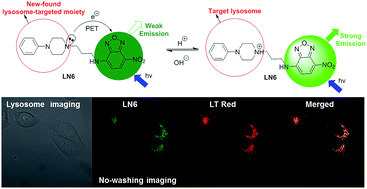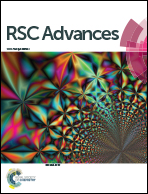A novel NBD-based pH “on–off” fluorescent probe equipped with the N-phenylpiperazine group for lysosome imaging†
Abstract
A novel PET-based fluorescent probe (LN6) targeting to lysosome was found from the synthesized NBD derivatives. This probe was equipped with the novel lysosome-targeted N-phenylpiperazine group, and could be employed to image lysosome and detect its pH change without any washing steps.



 Please wait while we load your content...
Please wait while we load your content...